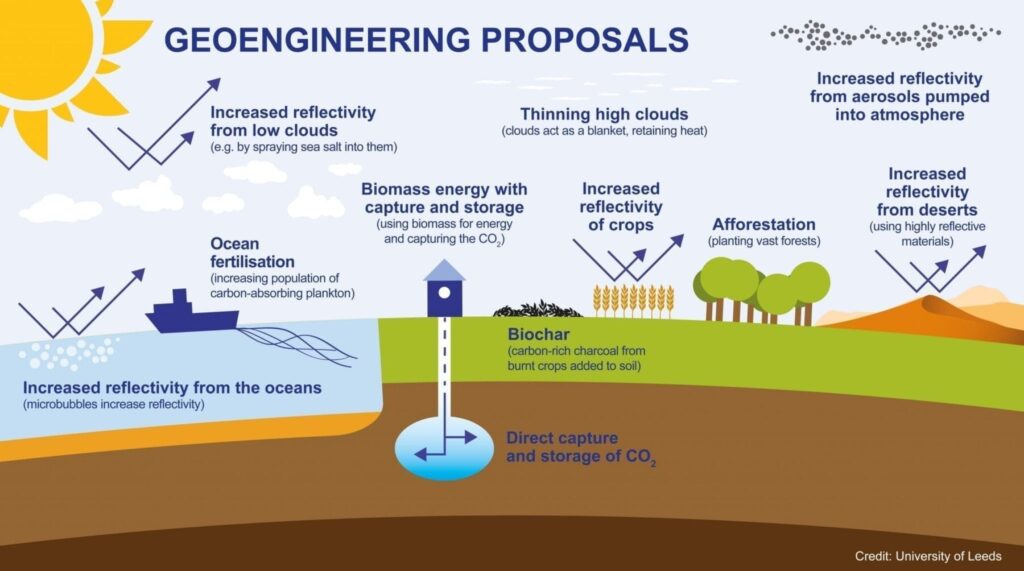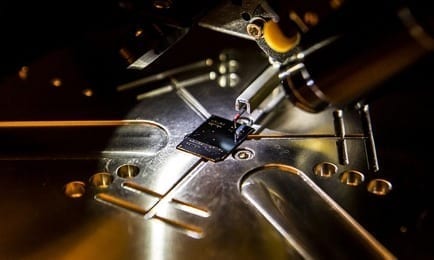
The deliberate, large-scale intervention in the Earth’s climate system is not a “quick fix” for global warming, according to the findings of the UK’s first publicly funded studies on geoengineering.
The results of three projects – IAGP, led by the University of Leeds; SPICE, led by the University of Bristol; and CGG, led by the University of Oxford – are announced at an event held at The Royal Society, London, on 26 November 2014.
Professor Piers Forster, Professor of Physical Climate Change at the University of Leeds, and the principal investigator of the Integrated Assessment of Geoengineering Proposals (IAGP) project, said: “Our research shows that the devil is in the detail. Geoengineering will be much more expensive and challenging than previous estimates suggest and any benefits would be limited.
“For example, when simulating the spraying of sea salt particles into clouds to try to brighten them, we found that only a few clouds were susceptible and that the particles would tend to coagulate and fall out before reaching the cloud base.”
In September 2009, The Royal Society published a report, Geoengineering the climate: science, governance and uncertainty. It influenced research worldwide, identified important gaps and called for a major UK funding programme into geoengineering. The IAGP and SPICE projects were funded the next year, and the CGG project followed in 2012.
IAGP is the UK’s first interdisciplinary research study into the controversial issue of geoengineering. It has brought together a range of expertise – climate modelling, philosophy and engineering – in addition to understanding public perceptions, to assess geoengineering within wider societal values.
“Cleverly designed simulations create less necessity for real-world testing.. My favourite part of the research involved creating a virtual reality in which we tried to rescue Arctic sea ice by dumping sulphur dioxide into the atmosphere from Stratotanker aircraft flying out of Svalbard in Norway,” said Professor Forster.
“Issues around monitoring and predicting the effects of our actions led to huge indecision and highlighted how challenging it would be to ever try and deploy these techniques in the real world.”
Researchers working on the Stratospheric Particle Injection for Climate Engineering (SPICE) project took a different tack, but came to a similar cautionary conclusion.
Rather than running simulations, SPICE researchers used volcanoes as models to mimic the effect of a solar geoengineering proposal, in which sulphate aerosols are pumped into the atmosphere to reflect more sunlight back into space. This is a process that also naturally occurs due to particles emitted from volcanic eruptions.
Dr Matthew Watson, a reader in natural hazards from the University of Bristol, and principal investigator for the SPICE project, said: “Whilst it is clear that temperatures could be reduced during deployment, the potential for misstep is considerable. By identifying risks, we hope to contribute to the evidence base around geoengineering that will determine whether deployment, in the face of the threat of climate change, has the capacity to do more good than harm.”
The Latest on: Geoengineering
[google_news title=”” keyword=”Geoengineering” num_posts=”10″ blurb_length=”0″ show_thumb=”left”]
via Google News
The Latest on: Geoengineering
- Cloud control: Humanity’s never-ending quest to control the weatheron April 29, 2024 at 6:53 am
For over a century, we’ve turned to technology in an attempt to control the weather. Are today’s geoengineering proposals any better?
- Startups want to cool Earth by reflecting sunlight. There are few rules and big riskson April 28, 2024 at 5:04 am
Solar geoengineering — increasing the sunlight reflected back into space to cool the planet — is gaining the attention of people looking for climate solutions. But critics say it comes with risks.
- Scientist Slams Politicians For Banning Geoengineering Experimentson April 27, 2024 at 3:00 am
A climate scientist is warning against regulatory attempts to quell weather-changing technology, which seeks to cool the planet through various means as climate change keeps heating it up. In an ...
- Controversial methods to cool the Earth by reflecting sunlight gain traction as global temperatures riseon April 26, 2024 at 2:20 pm
Relatively untouched ideas are gaining momentum as potential short-term solutions to lower Earth's temperature.
- Controversial methods to cool earth by reflecting sunlight gain traction as global temperatures riseon April 26, 2024 at 3:07 am
Solar radiation modification, or solar geoengineering, is a concept that covers several different technologies or approaches to essentially reflect sunlight back into space to manipulate the ...
- Solar geoengineering to cool the planet: Is it worth the risks?on April 25, 2024 at 8:53 am
When I first wrote about geoengineering in 2012 , it was considered far-fetched at best, and crazy by most. But 12 years later, while there is still controversy and considerable resistance to ...
- MIT Technology Reviewon April 23, 2024 at 1:46 pm
We need more research, including outdoor experiments, to make better-informed decisions about such climate interventions.
- Geoengineering could save the ice sheets – but only if we start soonon April 22, 2024 at 6:02 am
Shading the planet by spraying aerosols into the stratosphere might stave off ice sheet collapse, modelling studies suggest, but we are running out of time ...
- Startups want to geoengineer a cooler planet. With few rules, experts see big riskson April 21, 2024 at 1:59 am
In a parking lot and on San Francisco Bay, NPR witnesses two different tests for solar geoengineering to tackle climate change. With much science unsettled, experts say regulations aren't keeping up.
via Bing News











